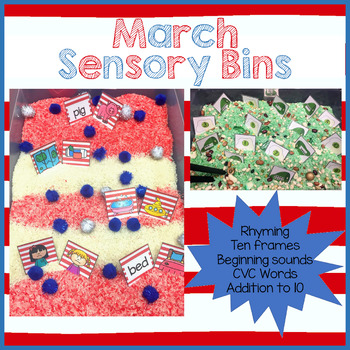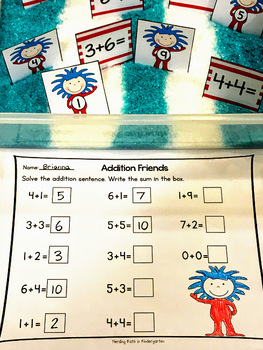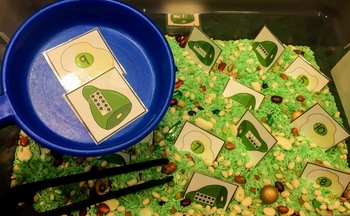March Math & Literacy Centers
- PDF
Description
Need some fun March activities for your sensory bin or math & literacy centers? Check out these easily differentiated activities that combine literacy and math with favorite March themes! Your students can practice beginning sounds, rhyming, CVC words, subitizing, ten frames and addition to 10 with this pack! You can use these activities in your centers, or add your favorite sensory bin filler and see your students' engagement go through the roof!
Included:
Rhyming/CVC Word cards. With these cards, you can choose whether you want your students to match the picture card to the CVC card or find two picture cards that rhyme. Choose the appropriate recording sheets for rhyming or CVC words.
Addition to 10. Students match the addition sentence card to the sum card. Includes matching recording sheets.
Ten Frames to 20. Students practice subitizing skills by matching ten frames cards to numeral cards. Choose matching recording sheets to 10 or 20 to differentiate for your students.
Beginning Sounds. Students match the alphabet cards to the picture card with the correct beginning sound. Alternatively, have children match the upper case cards to the lower case sheet. The matching recording sheets have students cute and paste the correct picture next to each letter.
Related Products
• Circus Cat Alphabet Match-Up
• Circus Cat Roll & Graph Activity
• Circus Cat Themed Roll & Cover Addition & Subtraction Games!
• Circus Cat True/False Equations
• Fishy Fry Phrases with the Circus Cat
• Circus Cat I have...Who has..? Time to the Hour and 1/2 Hour Game





